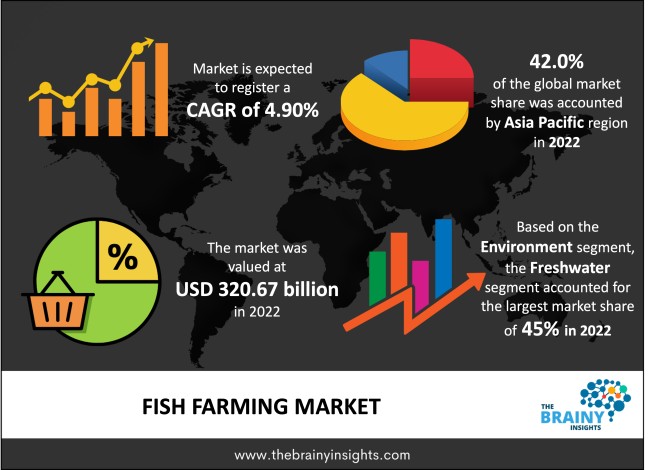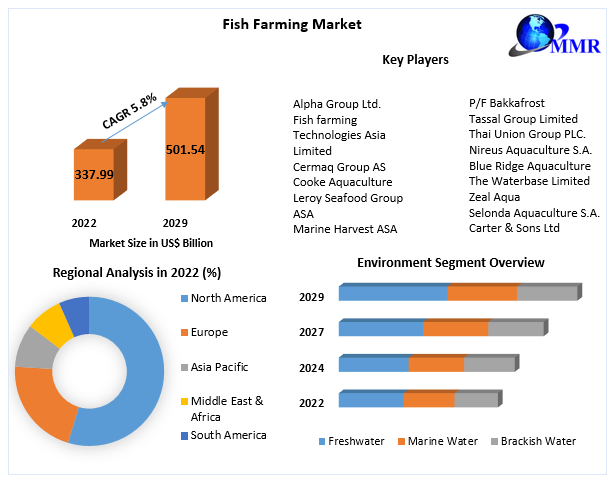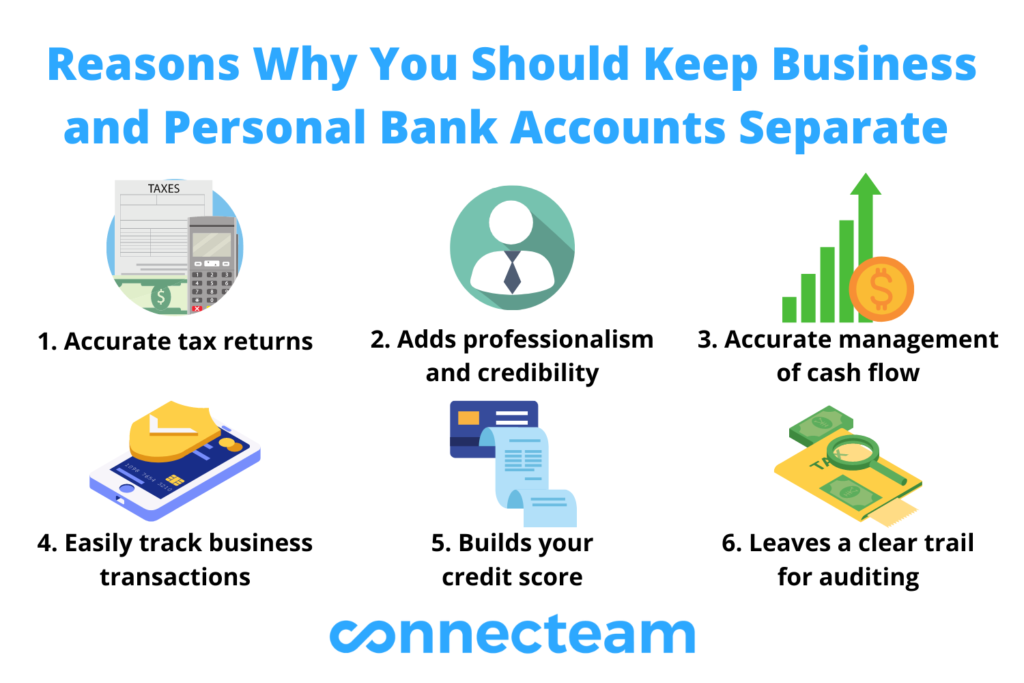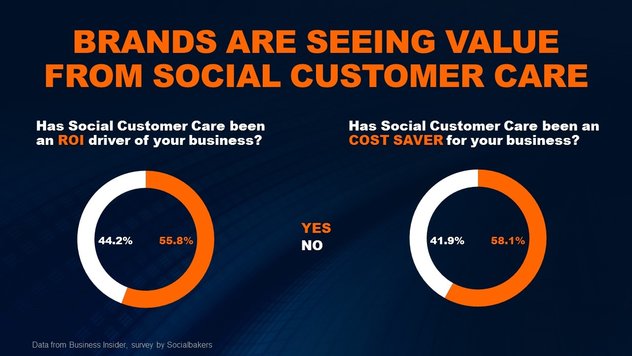The fish farming industry has grown rapidly in recent years, with a compound annual growth rate (CAGR) of 4.9% from 2023 to 2032. As consumer demand for healthy, sustainable protein sources increases, fish farming presents a lucrative business opportunity.

Starting a fish farm requires careful planning and knowledge. You’ll need to choose a location with access to fresh water, construct the proper equipment and housing, obtain fingerlings to raise, and master techniques to keep your fish healthy and growing. It’s also vital to understand processing, regulations, and how to access distribution channels and customers.
If you have an entrepreneurial spirit, a passion for aquaculture, and don’t mind hard work, a fish farm may be your catch of the day. This guide will walk you through how to start a fish farm. Topics include market research, competitive analysis, marketing, customer focus, registering an EIN, and more.
1. Conduct Fish Farm Market Research
Market research is an important part of starting a fish farming business. Research provides insight into the best types of fish feed, trends in farming fish, your target market, and top methods for raising fish.
Some details you’ll learn through your market research as you start fish farming include:
- When examining market viability for a specific fish species, tilapia and catfish rank among the top farmed varieties globally.
- Regional demand differs across America as well.
- Coastal states see 63% higher seafood consumption per capita than landlocked regions.
- Large metro areas with international demographics show particular promise.
- Understanding buyer demographics and purchasing factors will further refine your target market.
- Consumers under 35 years old eat 25% more seafood than any other age group.
- Higher household incomes also correlate with above-average seafood spending.
- When choosing farmed or wild fish, priorities like cost, environmental impact, taste, and texture influence purchasing decisions.
Once you analyze the broad market data and narrow your focus, conduct local area scans to determine competition levels and geographic differences. This niche-focused research will give you clearer insight into the ideal fish species and target customers for your fish farm business.
2. Analyze the Competition
Thorough competitive analysis is vital for any new fish farm venture. First, identify direct competitors – other local fish farms raising the same species. Directly visit their facilities and farms if possible to gather intel.

Assess factors like their size, equipment, visible health of fish stocks, and any specialties or unique attributes. Search their websites and social media presence to gauge pricing, products offered, distribution channels utilized, and how they market their brand’s story and offerings.
Look wider to include competitors offering alternate protein sources, from wild-caught seafood suppliers to meat producers. Understand how fish competes on factors like pricing, sustainability perception, and ease of cooking against other animal proteins.
Research indirect competitors too – stores and restaurants selling farmed fish. Site visits provide insight into their product display, pricing, and visual quality indicators that impact what consumers will pay for your fish. Evaluating competitors across the entire value chain will reveal where you can differentiate.
Online reviews and forums give transparency into consumer perspectives that impact competitive standing. Monitor ratings and commentary on taste, freshness, environmental factors, pricing, and more. This intelligence shows not just where competitors succeed and fail, but also what today’s discerning purchasers value when buying fish.
3. Costs to Start a Fish Farm Business
Embarking on a new aquaculture venture necessitates thorough financial planning and cost analysis. Between startup expenditures and ongoing operational costs, fish farming requires substantial capital investment to establish and sustain your business.
Start-up Costs
Initial startup costs typically range from $50,000 to $500,000 or more depending on the scale of your facilities and production goals.
Purchasing or leasing land with water access represents one of your biggest upfront investments, often $100,000 to $250,000. Clearing, grading, and preparing your site for construction can cost an additional $15,000 to $30,000.
Building out the physical fish farm infrastructure involves several key costs:
- Ponds or tanks – $10,000 to $100,000+
- Pumps & filtration systems – $5,000 to $20,000
- Generators & equipment – $10,000 to $50,000
- Water quality testing kits – $2,000 to $5,000
- Netting & containment enclosures – $5,000 to $20,000
- On-site office/storage – $5,000 to $20,000
- Acquiring all necessary permits, licenses, and inspections to legally and safely operate will run you $5,000 to $10,000.
- Purchasing fingerlings and juvenile fish to begin raising on your farm costs around $5,000 to $10,000.
- Lawyers to establish business entities and contracts cost $2,000 to $5,000. Consultants may also be enlisted for specialized technical guidance at $5,000 to $20,000.
- Website development, branding, and initial marketing promotions to announce your business will require $10,000 to $30,000 upfront.
- Expect another $5,000 to $10,000 for nets, tanks, safety gear, office equipment, fish food, and other supplies.
In total, your startup costs can easily exceed $250,000 to $500,000. Some secure loans to fund the substantial initial investment required.
Ongoing Costs
On the operating expense side, maintenance and running costs often tally $100,000 to $300,000+ annually:
- Fish food – $15,000 to $50,000
- Equipment maintenance and repairs – $10,000 to $30,000
- Gas and electricity – $10,000 to $25,000
- Water quality testing and pond/tank chemicals – $5,000 to $15,000
- Labor, either contracted or hired staff – $20,000 to $100,000
- Property lease fees if not owner-occupied – $10,000 to $100,000
- Liability insurance – $10,000 to $25,000
- Marketing and distribution – $10,000
While intensive upfront, recurring yearly costs must be accounted for in financial projections and funding. With realistic budgets set, you can build a profitable and sustainable fish farming operation.
4. Form a Legal Business Entity
Structuring your fish farm into the right legal business entity is a key early step with long-term impacts. The entity type you form dictates important factors like liability protection, taxes, ownership flexibility, and financing options. Weighing the pros and cons of each for an aquaculture venture is wise.
Sole Proprietorship
A sole proprietorship is the simplest structure – you alone own and operate the unincorporated business. This allows full control and avoidance of corporate setup costs and formalities. However, it exposes your assets to any farm debts or legal claims. Sole proprietorships also limit fundraising capabilities should you want to expand. While an easy initial setup, limitations emerge as the business grows.
Partnership
Forming a partnership splits owner duties and financial risks between two or more individuals through a partnership agreement. This can benefit fish farms by allowing you to share startup costs and workload. With pooled knowledge and resources, partners can also improve decision-making for complex elements like selecting fish species or disease prevention.
Limited Liability Company (LLC)
For aquaculture ventures, LLCs offer the best of both worlds – limited liability protection without double taxation. Assets owned by the LLC are separate from your assets, protecting you from debts and legal issues arising solely from the business. Unlike corporations, LLC income passes through to members’ tax returns, avoiding corporate taxes. Startup and administration are also simpler than a corporation.
Corporation
Establishing a corporation creates the highest level of personal asset protection but forces business profits to face double taxation – both corporate and personal. The complex setup and dissolution process plus extensive recordkeeping requirements also make corporations costly and complicated for small fish farms. Corporations become better suited once attempting to raise funds from outside investors.
5. Register Your Business For Taxes
Before legally operating any fish farm, you must obtain an Employer Identification Number (EIN) from the IRS. Much like a social security number for an individual, EINs provide a unique tax ID number that identifies your business to federal and state tax authorities.
Acquiring your EIN is thankfully a quick and free process:
- Go to IRS.gov and navigate to the Employer ID Number page.
- Select the option that best describes your business. For fish farms, you would choose “View Additional EIN Information” under “Other businesses/entities.”
- On the next page, choose “Apply Online Now” to access the online EIN Assistant tool.
- Answer the questions about your business structure, ownership, and activities as prompted.
- Provide contact details for your business’s responsible party to receive the EIN confirmation.
- Review all entries for accuracy then hit Submit.
Once approved, you will receive the EIN immediately on the final confirmation screen. The same number will also arrive via the email you provided.
With your EIN secured, remember to also officially register with your state government to obtain appropriate sales tax permits, business licenses, and aquaculture-specific operating certificates. Every state has slightly varying requirements and associated fees, so research what is needed to legally operate in your jurisdiction.
6. Setup Your Accounting
With intensive startup costs and tight operating margins, meticulous financial tracking is vital for fish farm profitability. Investing early in robust accounting and bookkeeping saves money over the long run and prevents IRS issues.

Open a Business Bank Account
Begin by separating all personal and fish farm finances. Open a free business checking account to dedicate solely to farm transactions. This keeps expenses organized and provides clean documentation if ever audited.
Apply for a Business Credit Card
Apply for a business credit card as well to simplify tracking farm-specific purchases. Business card limits are determined by your startup capital invested, revenue potential projected on your application, and personal credit score.
Accounting Software
Acquire user-friendly accounting software like QuickBooks to automatically centralize financial data. Connect your farm business bank/credit card accounts so transactions seamlessly import. QuickBooks helps produce income statements, balance sheets, cash flow reports, and other critical financials on-demand to inform decisions through real-time visibility.
Hire an Accountant
Consider retaining an accountant from a startup to handle bookkeeping, payroll, taxes, audits, and advisor services uniquely tailored to fish farms. A part-time bookkeeper runs around $50 per hour, preparing statements and reconciling your accounts monthly. Come tax season, your accountant can finalize returns starting around $500.
7. Obtain Licenses and Permits
Before welcoming your first fish stock, every aquaculture operation must acquire appropriate licenses and permits to legally and safely conduct business. Find federal license information through the U.S. Small Business Administration. The SBA also offers a local search tool for state and city requirements.
At the federal level, the EPA mandates permits for discharging wastewater or other effluents, critical for the water filtration systems on farms. The Clean Water Act specifies strict pollution limits to meet through the EPA’s National Pollutant Discharge Elimination System (NPDES) permitting process costing $500 to $3000 depending on your state.
The FDA also regulates commercial fish farming practices and products through their seafood Hazard Analysis Critical Control Point (HACCP) food safety certification. Developing your customized HACCP plan examining biological, chemical, and handling hazards ensures compliance with processing standards.
State Departments of Agriculture or Fish & Wildlife oversee licensing to legally operate aquaculture facilities before stocking fish on site. For example in Texas, an Aquaculture License costs $252 per year covering farm inspections and disease control measures.
Many states also require water rights permits for drawing from natural sources like rivers or lakes for farm use. Connect with your county clerk’s office to ask about locality-specific permits that dictate construction codes and land usage for aquaculture.
Some municipalities enforce additional regulations like nutrient management plans dictating how you contain and dispose of fish byproducts and waste. Ultimately permits and planning approval times vary, so you must determine all necessary documentation early and budget 12 to 18 months to work through respective channels.
8. Get Business Insurance
Insuring your aquatic business shields against financial ruin when the unpredictable occurs. Without coverage, a single catastrophe could permanently sink your farm.
Consider a disease outbreak that wipes out your entire fish stock not covered by insurance. The six-figure loss of assets and sales could shutter operations. Or imagine a filter malfunction that dumps contaminated water into local streams prompting major EPA fines. Even a small fire could cause tens of thousands in repairs and delayed production.
Getting comprehensive insurance ensures these “what if” scenarios don’t devastate your livelihood. Core coverage types to secure include property insurance covering buildings, equipment, meshes, boats, and other physical assets. Also important is liability insurance to protect against 3rd party injury/damage claims as well as product liability for when inventory causes harm.
Beginning your quote process simply requires gathering details on your locations, assets, staff, and projected revenue first. Research brokers specializing in aquaculture insurance. Then, complete the questionnaire applications provided to receive quotes for each policy type needed.
9. Create an Office Space
Operating an aquaculture business necessitates administrative tasks like bookkeeping, marketing, customer service, and supply chain coordination. Structuring a functional office space streamlines these duties in a professional environment conducive to focus.
Home Office
A home office allows owners to centralize operations under their roof at no added cost. Dedicate a separate room solely for farm paperwork, phone calls, and computer work whenever needed without a commute. However, mixing professional and personal spheres can breed distractions. Ensure clear work/life separation if housing your office at home.
Coworking Office
Coworking spaces like WeWork provide both community and infrastructure for remote businesses. Open work areas, private phone booths, conference rooms, printers, Wi-Fi, and front desk staff create productivity infrastructure for around $300 a month. The collaborative culture also enables networking with other small business owners.
Commercial Office
Commercial office spaces are best suited for established aquaculture businesses supporting multiple employees. Expect leases averaging $18 to $22 per square foot in addition to parking fees, utility costs, and other operating expenses. While more costly, the right office space projects professionalism to visiting clients and external partners.
10. Source Your Equipment
Launching an aquaculture operation hinges on procuring specialized equipment to house and harvest fish stocks. From filtration systems to boat motors, access to the right gear makes or breaks profitability. Strategically acquiring assets both conserves startup capital and provides the capabilities needed to optimally raise seafood.
Buy New
Purchasing brand-new equipment from dealers ensures full warranties and longevity for intensively used items. High-volume orders also secure discounts of around 10% to 15%. Sheer costs of new can overwhelm early funding limits.
Buy Used
Used marketplaces like Craigslist and Facebook Marketplace connect you with steeply discounted supplies from decommissioned farms or upgrading owners. Finding used aerators and tank heaters in working order cuts thousands in costs. Drawbacks include no return guarantees and liability for replacements should use goods fail prematurely.
Rent
Rentals present another avenue to access essential equipment without large out-of-pocket investments. Construction machinery like backhoes for clearing and digging ponds costs $300 per day versus tens of thousands to buy outright. The ability to test gear by renting first provides helpful insight before you commit long-term through a purchase.
Lease
Leasing agreements give access to advanced equipment like oxygenation machines, automatic fish feeders, and vaccine-administering technology without huge upfront fees. Expect monthly payments comparable to estimated declines in asset values over a 3-5-year period.
11. Establish Your Brand Assets
Cultivating a strong brand distinguishes your farm from commodity competitors. Investing in professional brand assets spotlights your unique value and story to attract ideal customers.
Get a Business Phone Number
Acquire a unique business phone line to project credibility through a dedicated aquaculture voice menu system from providers like RingCentral. Call routing, voicemail transcription, and toll-free options make managing customer and supplier calls more efficient.
Design a Logo
Creating a vibrant logo and visual identity inspires trust and recall. A memorable icon, color palette, and typography tie together your offerings. Looka’s logo maker helps develop custom designs matched to your farm’s personality for under $50.
Print Business Cards
Business cards establish legitimacy at trade shows and sales meetings. Cards identifying your specialty, contact details, and slogan help buyers easily store your information for future orders. Vistaprint runs specials allowing 500 cards for as low as $20.
Get a Domain Name
Secure a .com domain name aligning with your farm identity for instant online visibility. Short, simple domain names with keywords like seafoodfarm [dot] com improve findability. Use Namecheap’s domain search and get domain alerts to lock in domains as soon as they become available.
Design a Website
Launch a modern website showcasing your operations, products, and origin story. Self-service site builders like Wix make launching sites approachable for non-techies with 500+ designer templates from $14 monthly. Those wanting a fully custom showcase can hire specialized aquaculture web developers costing around $2,000 on freelance sites like Fiverr.
12. Join Associations and Groups
Tapping into aquaculture associations and peer groups provides invaluable mentorship as you navigate the unique challenges of fish farming. Surrounding yourself with supportive communities of fellow aqua culturists accelerates know-how.
Local Associations
Research local aquaculture or farmers’ associations through your state’s Department of Agriculture website. For example, Wisconsin members can join the Wisconsin Aquaculture Association for just $25 a year, gaining access to workshops, marketing resources, and peer networking.
Local Meetups
Attending regional tradeshows is equally important for connecting face-to-face with suppliers, buyers, and advisors in your niche. Use Meetup to find upcoming events in your area. If you don’t see an event you like, create one of your own.
Facebook Groups
Beyond state and local groups, dive into vast online communities that unite fish farmers. Some groups to check out include Fish Farming as a Business Linking Farmers and Backyard Fish Farming. These groups include thousands of members with similar businesses blooming.
13. How to Market a Fish Farm Business
Implementing marketing best practices is non-negotiable for fledgling aquaculture ventures striving to carve market share. While raising healthy fish stocks remains imperative, spreading awareness and nurturing customer retention ultimately fuels repeat sales enabling business viability.
Personal Networking
Leverage existing personal networks first. Seek introductions to established restaurateurs, fishmongers, or distributors in your city from friends employed in the seafood industry. Word-of-mouth endorsements to those handling high volumes of fresh fish prompt lucrative first contracts. Offer exclusive discounts or free initial samples to hook new wholesale relationships.
Digital Marketing
Digital platforms present unmatched opportunities for farms to directly reach target buyers. Consider:
- Launch Google search and Facebook ads geotargeting seafood fans within 50 miles of your farm. Hyper-focused promotion plants your brand in front of motivated buyers perusing recipes or reading fishing magazines online.
- Start an Instagram account documenting the life cycle of fish on your farm through hatching, feeding, and harvesting. This behind-the-scenes view nurtures customer relationships.
- Upload educational YouTube videos detailing your sustainability practices to align with shifting consumer preferences.
- Blog about lesser-known fish species and creative preparation tips to boost SEO and inform recipes.
Traditional Marketing
Traditional mediums also help expose your offerings nearby:
- Print flyers to pin on public boards at marinas, bait shops, and community centers frequented by fishing aficionados.
- Take out ads in local newspapers and magazines catering to foodies and outdoor adventurers.
- Sponsor public radio segments like the fishing report to align with core demographics.
Getting ingenious with marketing positioned around peak seasons and targeted buyer segments drives measurable results as you put your farm on the map.
14. Focus on the Customer
In the fresh seafood business, focusing intently on customer service distinguishes thriving farms from lackluster ventures. How you make patrons feel during sales and after purchase directly impacts longevity.

Consider an instance where a first-time restaurateur customer receives a shipment with two DOA (dead on arrival) farm fish. If you politely apologize, immediately replace the perished fish, and provide a 25% discount on their next order, you have a loyal buyer for life. They reciprocate by recommending your unparalleled service to other chefs.
Conversely, being dismissive of issues can permanently collapse sales pipelines. Just one tone-deaf interaction with a hotel chain buyer complaining of soggy salmon fillets can prompt cancellation of their $5,000 monthly standing order. Damaged reputation ripples across networks starving oxygen to your business.
With narrow profit margins and intense competition in aquaculture, poor customer experiences become cost-prohibitive. However, farms investing energy into onboarding patrons, resolving complications, and surprising and delighting consistently cultivate devotees. This earns free marketing as enthusiasts voluntarily advocate you as the premier local fish supplier to all friends.
